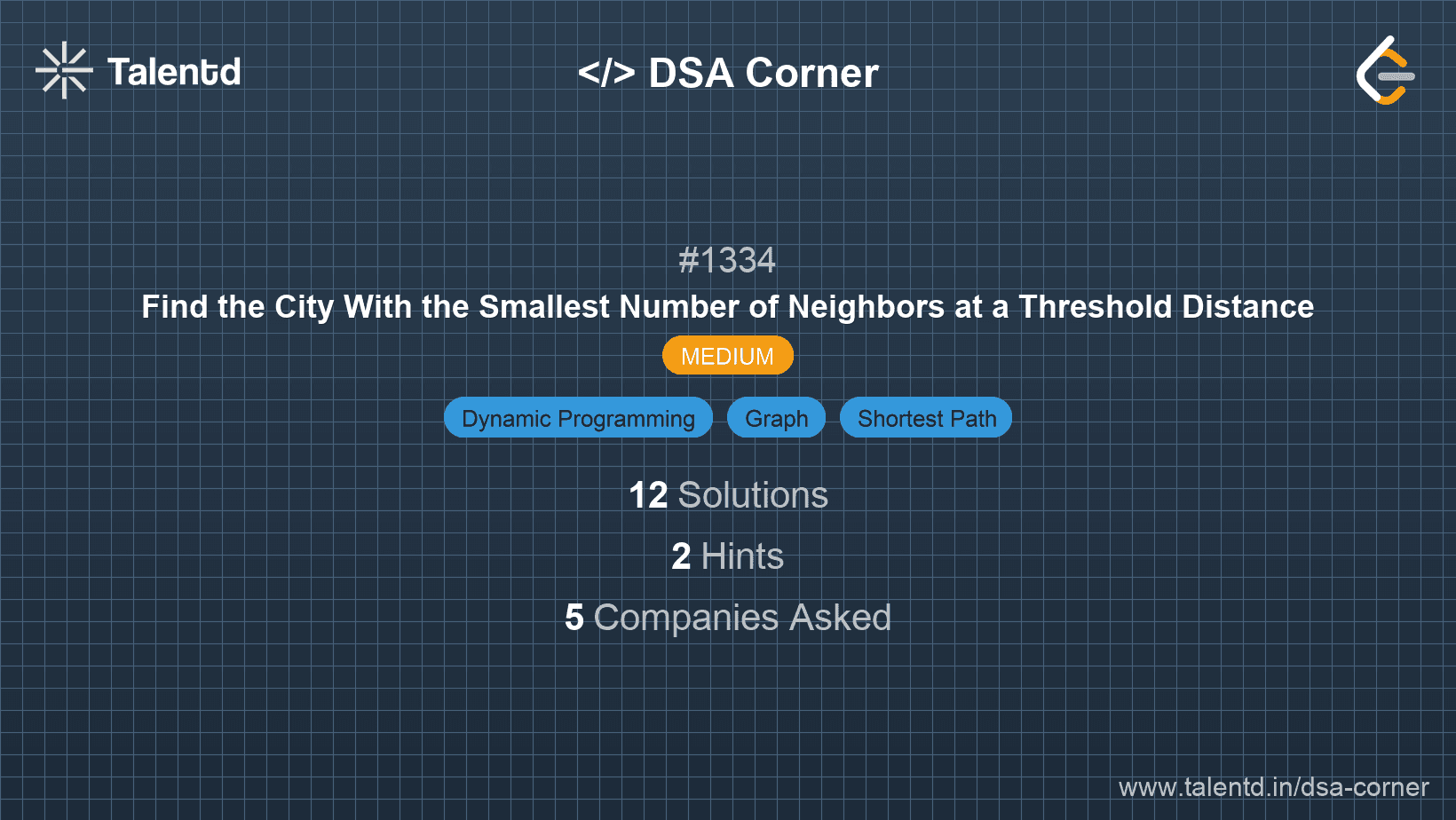
Sponsored
Sponsored
The Floyd-Warshall algorithm is a classical dynamic programming algorithm to solve the all-pairs shortest path problem. It works well for graphs that have both weighted and unweighted edges. The algorithm iteratively updates the distance matrix for each possible intermediate node and provides the shortest distances between any two nodes.
The algorithm has a time complexity of O(n^3) and a space complexity of O(n^2), making it suitable for graphs with up to 100 nodes as given in the problem constraints.
Time Complexity: O(n^3), where n is the number of cities.
Space Complexity: O(n^2) for storing the distance matrix.
1function findTheCity(n, edges, distanceThreshold) {
2 const dist = Array.from({ length: n }, () => Array(n).
This JavaScript code leverages a Floyd-Warshall methodology to figure shortest distances dtype(distance matrix). It reviews distances and counts neighboring nodes fitting within the given distance threshold per each city, and then optimally selects the best city based on these criteria.
Dijkstra's Algorithm can be employed to find the shortest path from one city to another in a graph with non-negative weights. We can utilize this algorithm to determine the shortest distance from every city to all other cities consecutively, assessing the count of reachable cities within the threshold afterward.
Time Complexity: O(n^2) for each node multiplied by n trips resulting in O(n^3).
Space Complexity: O(n^2) for graph storage.
using System.Collections.Generic;
public class Solution {
public int FindTheCity(int n, int[][] edges, int distanceThreshold) {
List<Tuple<int, int>>[] graph = new List<Tuple<int, int>>[n];
for (int i = 0; i < n; i++)
graph[i] = new List<Tuple<int, int>>();
foreach (var edge in edges) {
graph[edge[0]].Add(Tuple.Create(edge[1], edge[2]));
graph[edge[1]].Add(Tuple.Create(edge[0], edge[2]));
}
int minCity = -1, minNeighbors = int.MaxValue;
for (int i = 0; i < n; i++) {
int[] dist = new int[n];
Array.Fill(dist, int.MaxValue);
dist[i] = 0;
var pq = new SortedSet<Tuple<int, int>> { Tuple.Create(0, i) };
while (pq.Count > 0) {
var min = pq.Min;
pq.Remove(min);
int u = min.Item2, curDist = min.Item1;
if (curDist > dist[u]) continue;
foreach (var neighbor in graph[u]) {
int v = neighbor.Item1, weight = neighbor.Item2;
if (dist[u] + weight < dist[v]) {
dist[v] = dist[u] + weight;
pq.Add(Tuple.Create(dist[v], v));
}
}
}
int count = 0;
for (int j = 0; j < n; j++)
if (i != j && dist[j] <= distanceThreshold)
count++;
if (count <= minNeighbors) {
minNeighbors = count;
minCity = i;
}
}
return minCity;
}
public static void Main() {
var solution = new Solution();
int n = 4;
int[][] edges = { new [] {0, 1, 3}, new [] {1, 2, 1}, new [] {1, 3, 4}, new [] {2, 3, 1} };
int distanceThreshold = 4;
Console.WriteLine(solution.FindTheCity(n, edges, distanceThreshold));
}
}
The C# implementation uses a sorted set to manage node extensions akin to Dijkstra's execution across cities, calculating minima for neighbors and recording optimal city endpoints.